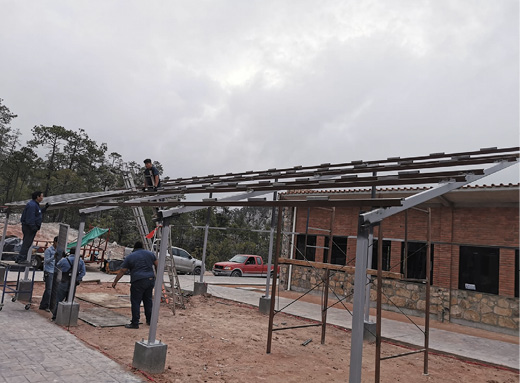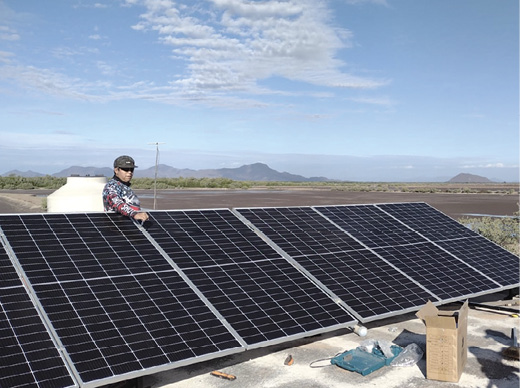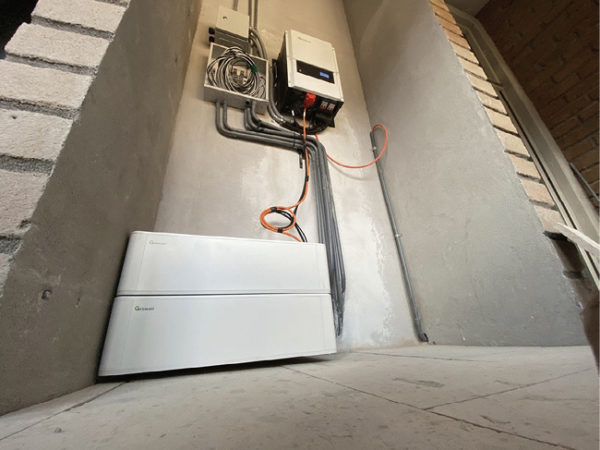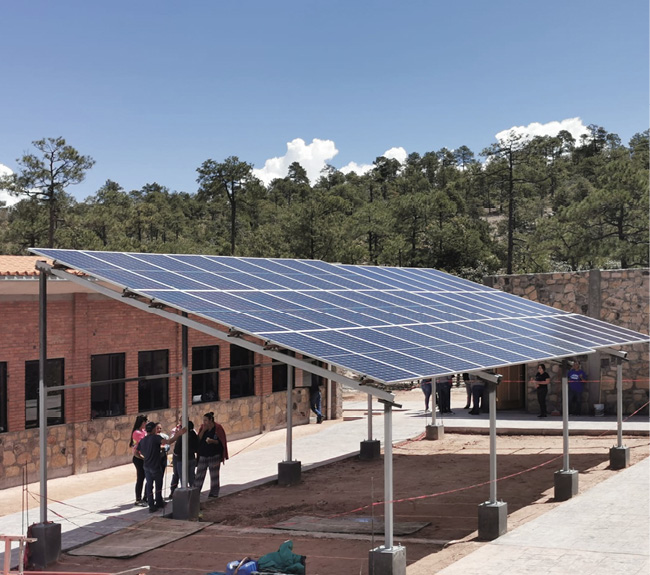The state of Chihuahua, in northern Mexico, is the largest in the country, with a land area similar to that of the United Kingdom. But with a density of around 15 inhabitants per square kilometer, it is also one of Mexico’s least populated regions. Noteworthy though, is the fact that Chihuahua has one of the highest sunshine indices in the world.
Chihuahua covers a diverse landscape, ranging from the desert that borders the United States to a plain that extends to the southwest and ends in a mountainous area. It is easy to imagine how this translates into the territory’s isolation from the electrical network, and therefore an electrical shortage.
Thankfully, two projects serve as examples of how a reliable solar power supply can be brought to such regions at a fraction of the cost of diesel generators and other options. Both are autonomous microgrids powered by solar: the first a 12.7 kW array located in the municipality of Urique, and the second a 3.2 kW PV installation, on an agricultural ranch located in El Oasis, a town in the municipality of Ojinaga.
The first case involves powering the facilities of a local university, the Universidad Tecnológica, near the town of San Rafael, in a mountainous area difficult to access.
“Moving the equipment there required the use of a 4×4 car,” explains industrial electronics engineer Regino Gaytán, who was in charge of developing the project, which arose from a statewide bidding process in which around nine proposals were submitted. “We were chosen because, in addition to giving the best price, we presented the best type of structure for the type of climate in that mountainous area, which at certain times of the year is very windy with gusts that sometimes reach 100 km/h”.
“To avoid that problem,” Gaytán continues, “we built a combination of stainless steel and aluminum for mounting the panels, a shed structure mounted on tall poles, without walls, 2.5 meters high in one section and 4 meters high in the other. The shaded area underneath is used as an outdoor classroom area where students have ready access to power outlets and laptop chargers.

The equipment, which took three months to install, consists of 505 W modules, “a relatively new model in the photovoltaic market, with 210 mm cell technologies,” says Carlos Gutiérrez Benítez, SolarEver’s deputy director of manufacturing.
Three Growatt off-grid inverters (SPF 3000TL LVM) integrated with an MPPT (Maximum Power Point Tracking) solar charge controller, a high-frequency pure sine wave inverter and uninterruptible power supply function in a single machine. Backing up the energy storage with 48 V in module design are 10x 2.56 kWh lithium iron phosphate (LiFePO4) batteries, also from Growatt.
Until the start-up of the microgrid in October last year, the facilities were powered by diesel generators – of which two remain as backup – the average monthly fuel cost prior to adding the solar microgrid was more than $1,000.
The new photovoltaic installation covers the needs from Monday to Saturday of air conditioning and heating systems, lighting, chemistry laboratories and welding equipment, among others, benefiting a group of 110 people, including teaching and administrative staff and students, many of whom come from several nearby indigenous communities.
El Oasis
The other microgrid system serves a newly constructed agricultural ranch growing cotton, corn, and watermelon, located about 70 km from the US border. In this case it is an installation for home use, smaller than the previous one, to supply energy for a refrigerator, air conditioning, lighting and heating.
SolarEver’s Gutiérrez Benítez breaks down the 3.2 kW installation into six 540 W modules with 182 mm cells, which he says is the best-selling line, offering flexibility for more types of project; and which adapts easily to more inverters with any type of capacity. The configuration is completed with a Growatt SPF 4000T DVM inverter, which also provides two batteries similar to those described in the previous project – that is, 2.5 kWh each.

“This is an example of projects for home use, and part of a strategy we are adopting with Growatt,” adds Gutiérrez Benítez. “It is about adapting these new technologies with inverters and batteries offline, in areas that do not have access to a power grid.”

On this occasion, according to developer Calvin Penner, both the analysis of the work field and the installation of the equipment took two days each. The challenge this time around was the area, with a lot of suspended desert dust that still presents challenges,” he acknowledges. However, the installed solar energy storage system works stably in these harsh conditions to deliver reliable clean power for the ranch.
This content is protected by copyright and may not be reused. If you want to cooperate with us and would like to reuse some of our content, please contact: editors@pv-magazine.com.

